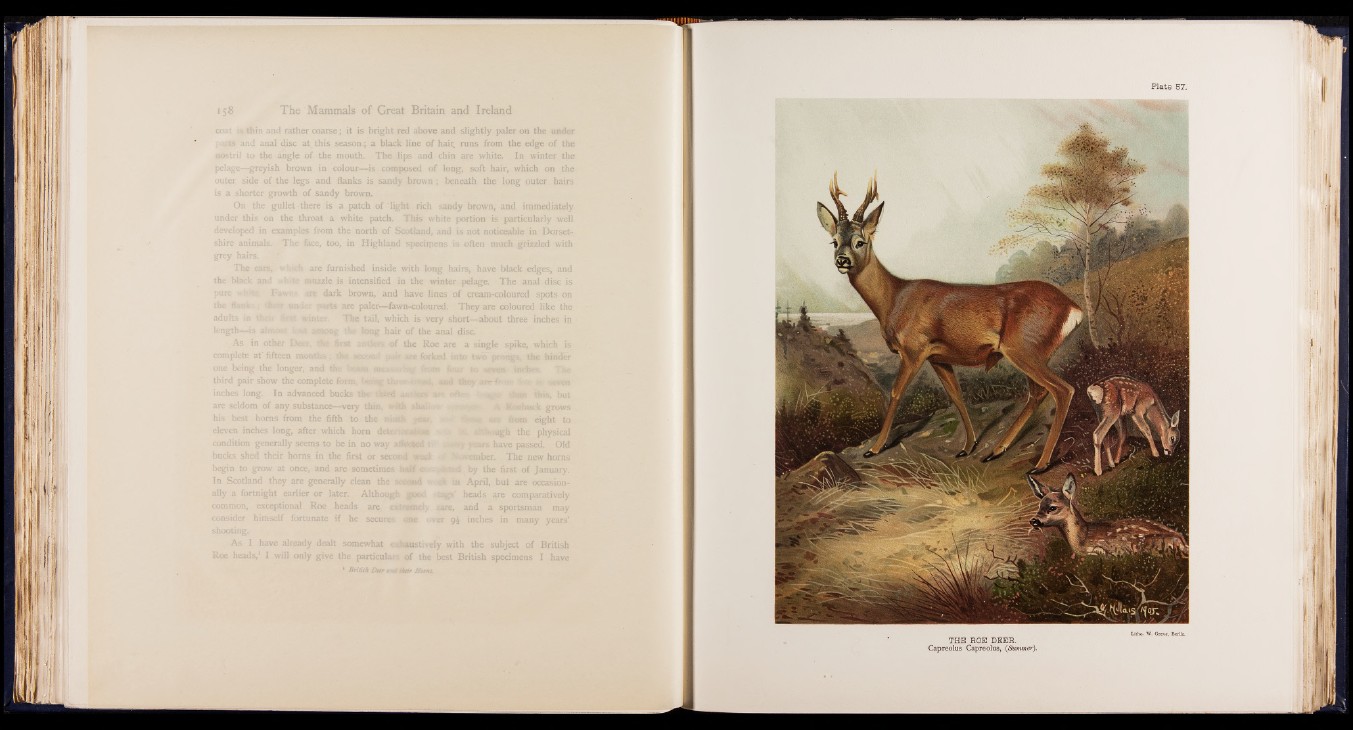
ier coarse; it is bright red above and slightly paler on the under
at this season; a black line of haic runs from the edge of the
of the mouth. The lips and chin are white. In winter the
wn in colour— is composed of long, soft hair, which on the
:gs and flanks is sandy brown; beneath the long outer hairs
of sandy brown.
there is a patch of light rich sandy brown, and immediately
throat a white patch. This white portion is particularly well
les from the north of Scotland, and is not noticeable in Dorset-
face, too, in Highland specimens is often much grizzled with
furnished inside with long hairs, have black edges, and
:le is intensified in the winter pelage. The anal disc is
dark brown, and have lines of cream-coloured spots on
uts are paler— fawn-coloured. They are coloured like the
The tail, which is very short— about three inches in
oog the long hair of the anal disc.
third pair show the complete form, fch
inches long. In advanced bucks the' Ihsrat
are seldom of any. substance—-very thin, w\
his best horns from the fifth to the ni®
eleven inches long, after which horn detei
condition generally seems to be in no way i
bucks shed their horns in the first or secc
begin to grow at once, and are sometimes
In Scotland they are generally clean the \
ally a fortnight earlier or later. Althougi
common, exceptional Roe heads are .d
consider himself fortunate if he secures
shooting.
A s I have already dealt somewhat e:
Roe heads,1 I will only give the particular
the Roe are a single spike, which is
are forked into two prongs, the hinder
- Roebuck grows
are from eight to
although the physical
years have passed. Old
4 week ■ November. The new horns
i&m. by the first of January,
send iT in April, but are occasion-
g o o d - 't a g s ’ heads are comparatively
fwaaely rare, and a sportsman may
one over 9-4- inches in many years’
S&ustively wjth the subject of British
of the best British specimens I have